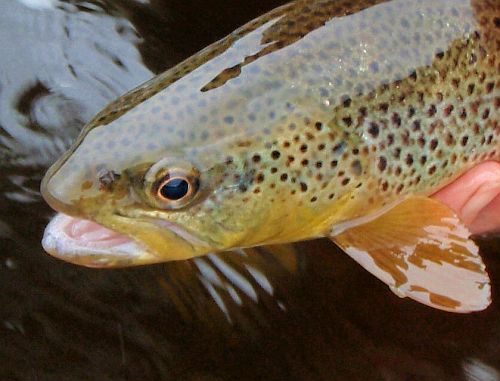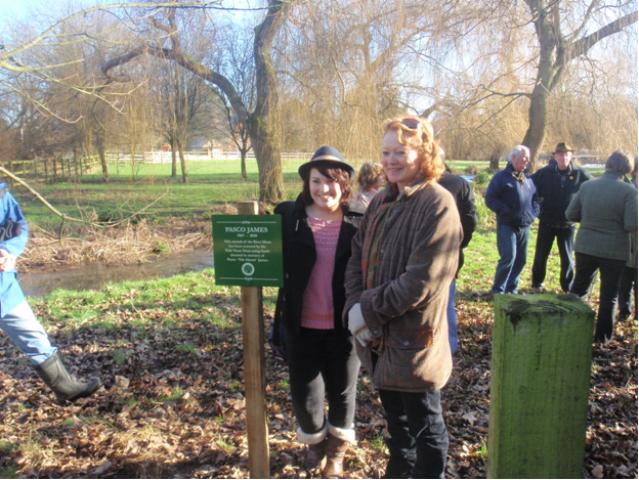A recent tree-fall on the River Dove in Derbyshire
Here at the Wild Trout Trust, we're always banging on about large woody debris (LWD) and its benefits for in-river habitat. In fact we spend an awful lot of time working on projects to introduce LWD to rivers. It could just be that the recent weather has saved an awful lot of leg-work by introducing LWD for you, without the need for lengthy consultations, consent applications and considerable expense!
Of course, some of the recent tree falls may have the potential to cause problems, for example by increasing flood risk if they are upstream of bridges and likely to break loose in floods. Many however will be firmly attached to the bank by root systems and remain stable during high water; these are some of the most valuable habitat features to be found on rivers. Trees which genuinely increase flood risk are likely to be assessed and removed by the Environment Agency, but those which are low risk or in waterourses not designated as "main river" will be the responsibility of the landowner. This provides a great opportunity to maximise the benefits for fish habitat by taking a hands-off approach.
The various WTT habitat manuals contain guidance on managing LWD in your river, orginally derived from the West Country Rivers Trust. It's worth re-iterating here:
- Is the debris fixed? If yes then continue to 2, if not continue to 5.
- Is the debris causing excess erosion by redirecting the current into a vulnerable bank? If yes then go to 5 if not then go to 3.
- Would fish be able to migrate past it (if the head difference across the LWD is greater than 0.4m or if the LWD appears ‘sealed’ then migration is unlikely to be possible). If yes got to 4, if no go to 5.
- Retain the woody debris in the river.
- Re-position securely using appropriate techniques, or extract the debris
Guidance on fixing LWD securely can be found in the WTT habitat manuals or by contacting our conservation officers. Remember, there are multiple benefits of having LWD in your river: cover for fish from predators, local scour which improves depth variety and cleans spawning gravel and retention of leaf litter which supports fly-life and improves trout food, to name but a few. So even if the newly fallen tree does cause a bit of inconvenience from an angling perspective, think long and hard before reaching for the chainsaw and winch!




